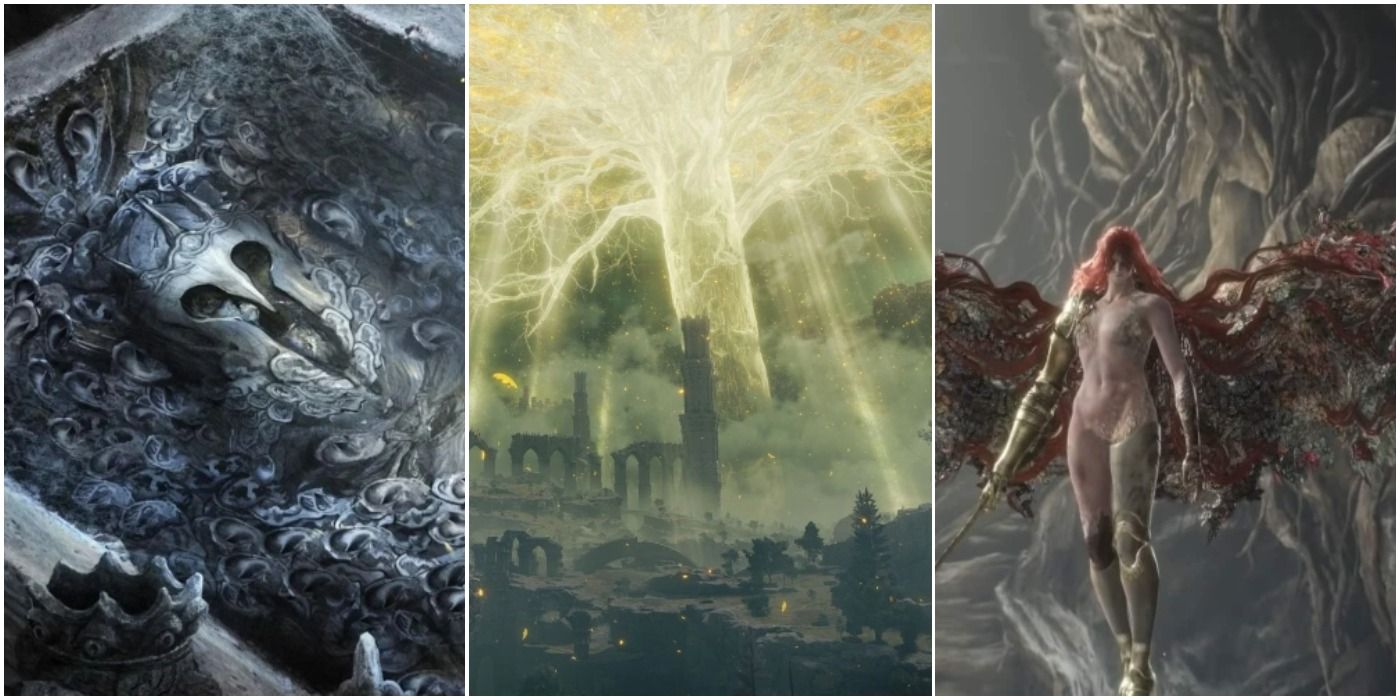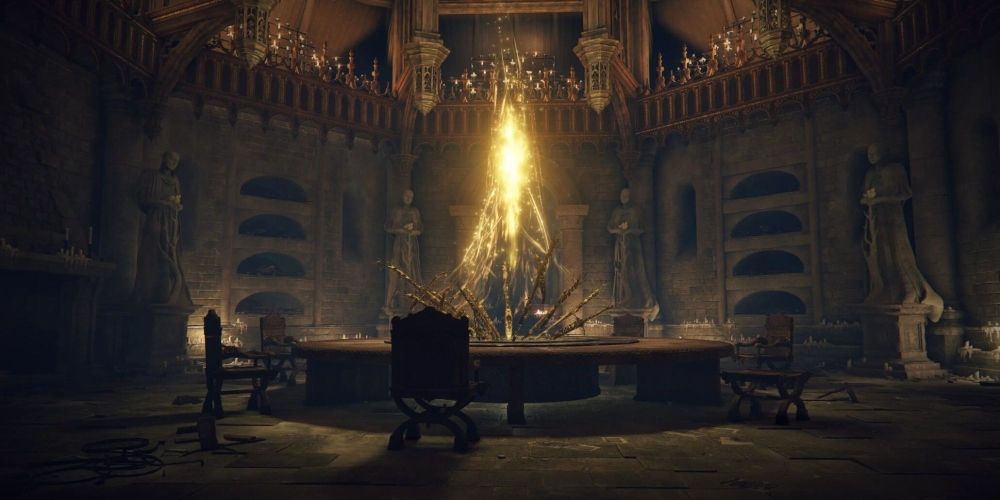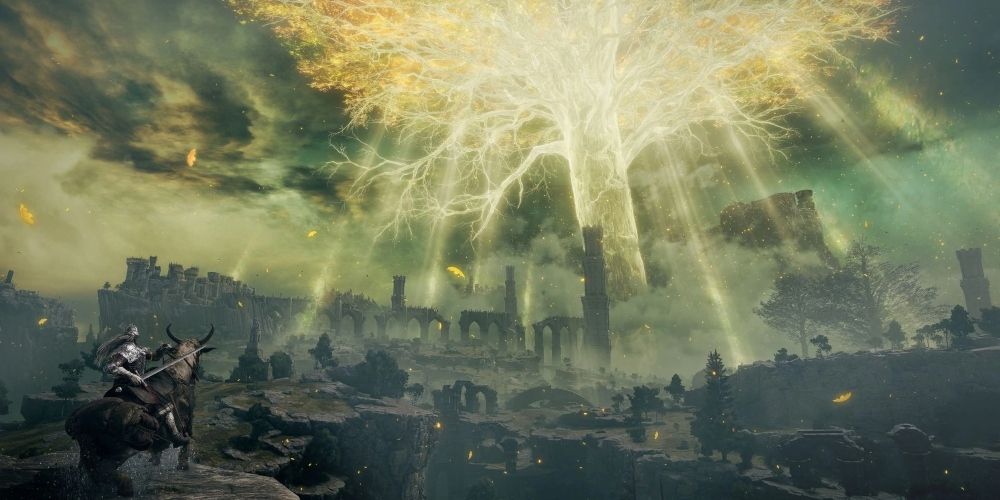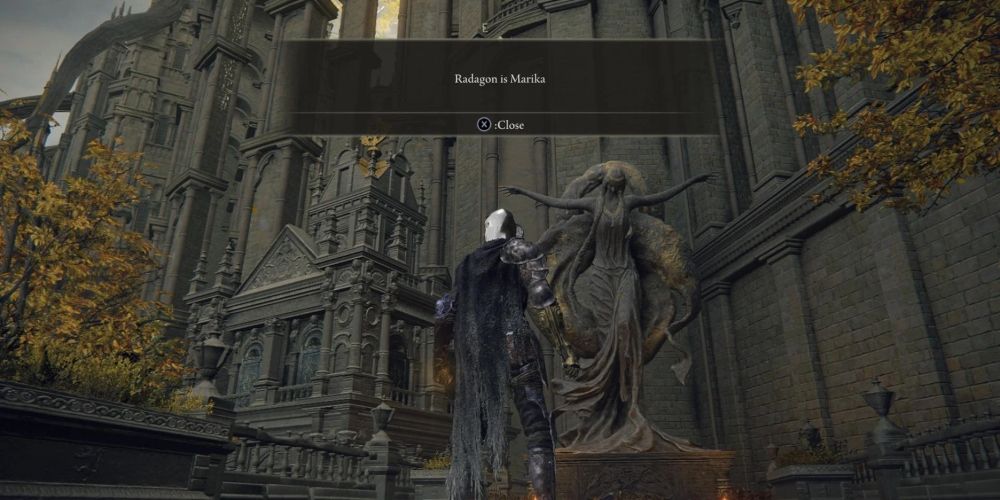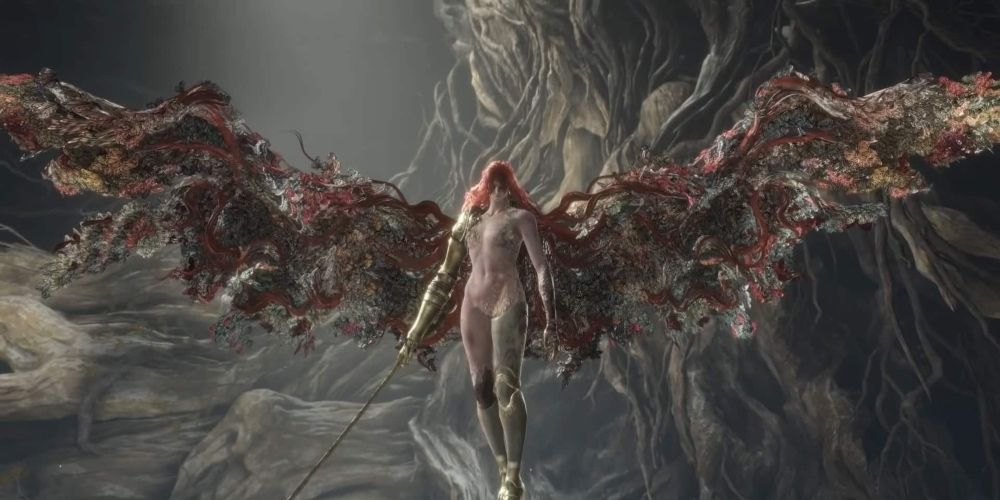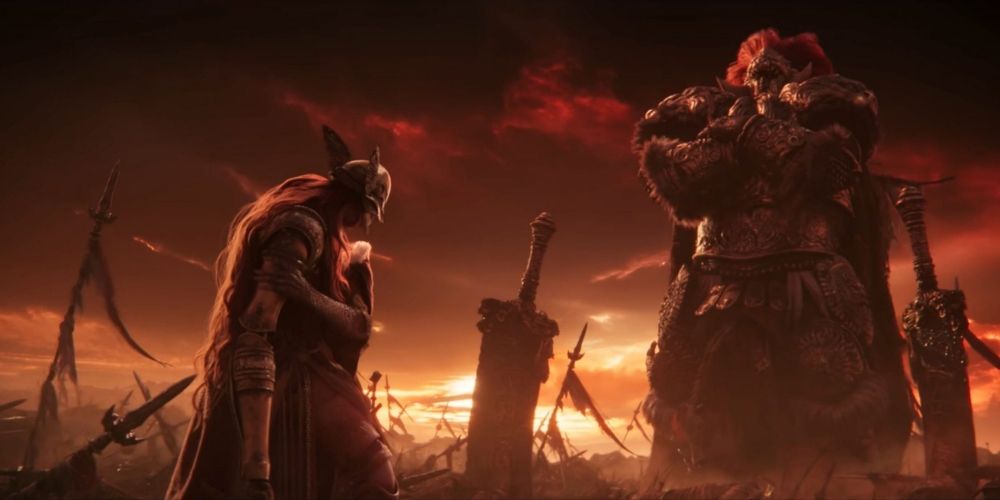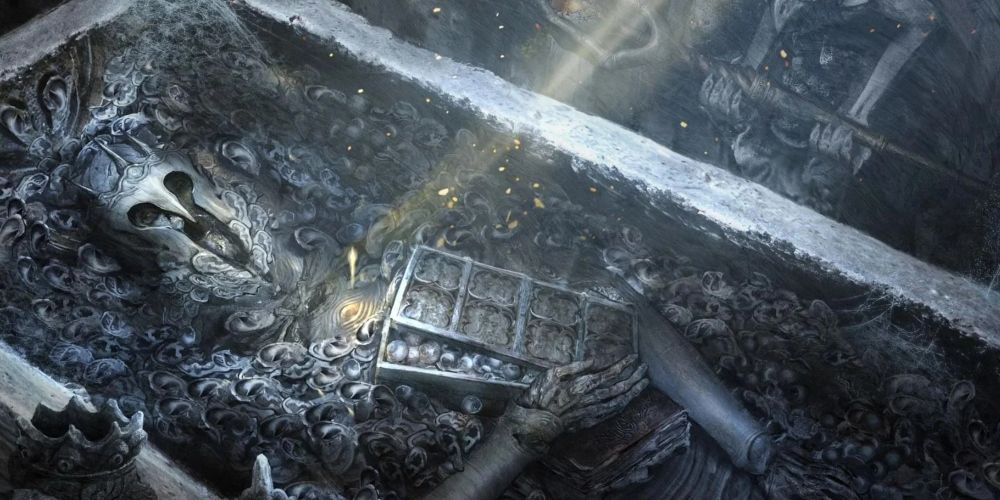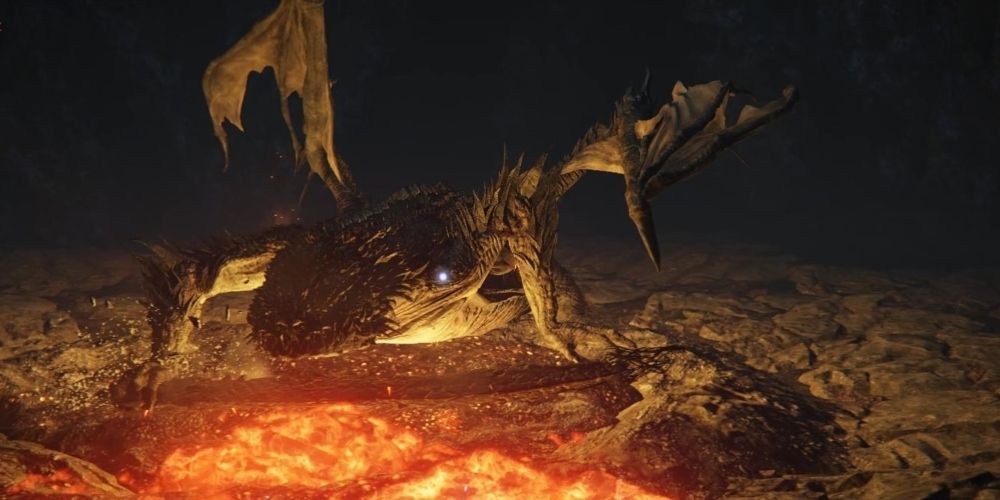In addition to its gripping gameplay and vast open world, Elden Ring has a deep and intricate fictional mythology regarding the Lands Between and its inhabitants. With centuries of history, several layers of divinity, and major world events like the war against the giants and the Shattering, there is plenty of backstory for players to delve into.
Much of this backstory is original, from the minds of writer George R. R. Martin and director Hidetaka Miyazaki. However, both writers are fond of using real-world history and mythology as their inspirations, meaning that Elden Ring draws on plenty of folklore and religion in its setting.
7 Roundtable Hold Is A Clear Nod To King Arthur
Early in the game, Melina brings the player to Roundtable Hold, a mystical location, and fortress inhabited by Tarnished seeking to become Elden Lord. The Hold is the hub for the game's NPCs, where they offer various services, and has an enforced truce within its main levels so that nobody can seek to harm one another.
As its name indicates, it is dominated by an enormous round table. This is a nod to Arthurian myth, one of the bigger sources of inspiration for the game, and the iconic Knights of the Round Table. Although the allusion isn't delved into too much, it serves to make clear the general respect the Tarnished have for one another, even as they compete for the same goal.
6 The Erdtree Is Inspired By Yggdrasil
Trees have been a symbol in many cultures, but none more strongly than Norse mythology, with its famous World Tree Yggdrasil. Norse myth is an admitted inspiration of both Martin and Miyazaki, and as such, it is one of the bigger influences on the game, with its central Erdtree serving as a reflection of this.
There are clear differences between the two, with the Erdtree not being omnipresent and not being an innate part of existence, but they serve similar roles. They are both magnificent, divine trees central to their settings that form a core part of the underpinnings of reality, as well as having the potential to grant otherworldly power.
5 Radagon And Marika Echo The Christian Trinity
One of the central plot twists in the game is the revelation that Queen Marika the Eternal and her second husband Radagon of the Golden Order are the same being. As the answer to several questions throughout the game, this is pivotal to not only Goldmask's questline but also the game's backstory as well.
The exact mechanics of their duality are not made clear, but they are commonly described as being one entity in two different forms, each with different aspects and roles. In this way, they echo the Holy Trinity of the Christian religion, in which God is a single being with three different aspects: the Father, the Son, and the Holy Spirit.
4 Characters Are Explicitly Described As Valkyries
One of the most famous parts of Norse mythology is the Valkyries, female warrior goddesses who serve as the choosers of the slain. They've created a distinctive cultural image which is echoed in Elden Ring, with Malenia being explicitly described as a Valkyrie, and the related NPC Millicent needing a prosthetic arm called the "Valkyrie's Prosthesis."
Both of these NPCs are warrior women, echoing the distinctive image of Valkyries, but other links seem few. Neither have any close ties to death, in comparison to the Valkyrie's duties revolving around the 'Einherjar'. However, both are tied to the Scarlet Rot, with its themes of rebirth, suggesting that there may be deeper similarities yet.
3 Marika's Family Are Like The Tuatha Dé Danann
Several commentators have noted strong Celtic influences in Elden Ring's lore beyond merely the King Arthur allusions, with Irish mythology, in particular, seeming a big inspiration. Most significantly, many have noticed that the demigods at the heart of Elden Ring's pantheon echo the major Irish mythological figures the Tuatha Dé Danann.
The Tuatha Dé Danann are a family of godly or demigod-like beings, deriving their divine status from their matriarch, Danu. They fought expansionist wars across Ireland, but eventually saw their power distinctly weakened. This reflects Marika and Radagon's children, with several other allusions between individual members, far more than any other folklore pantheon.
2 The Tarnished Return From Death Like King Arthur
The Tarnished in particular seem influenced by Arthurian mythology, even down to their role in the story. In folklore, King Arthur dies fighting against the Saxon invaders, but is fated to one day return when Britain needs him most, coming back from his grave in the land of Avalon.
This is very similar to the situation of the Tarnished. With the Shattering devastating the Lands Between, and no viable candidate for Elden Lord, the Tarnished return to claim their lost Grace and save their home. It's made more explicit by the Tarnished being banished to faraway lands, and by the fact that every Tarnished in the opening credits - including the player character - is dead and brought back, clearly echoing the role of King Arthur.
1 The Wyrms Are Close To Norse Dragons
A recurring enemy type in Elden Ring are wyrms. Distinct from dragons, their lore indicates them to be creatures corrupted and twisted by the consumption of dragon hearts - something that Yura can warn the player about in the early game. While not achieving the grace or power of true dragons, Wyrms are nonetheless powerful reptilian beasts and a clear threat.
Although not an exact parallel, this is similar to many of the dragons from Norse mythology. In Germanic folklore, several dragons were human beings who became dragons as a result of corruption or curses, rather than being natural creatures. Given the other Norse themes in the game, this seems like a likely source of inspiration for the game's wyrms.

